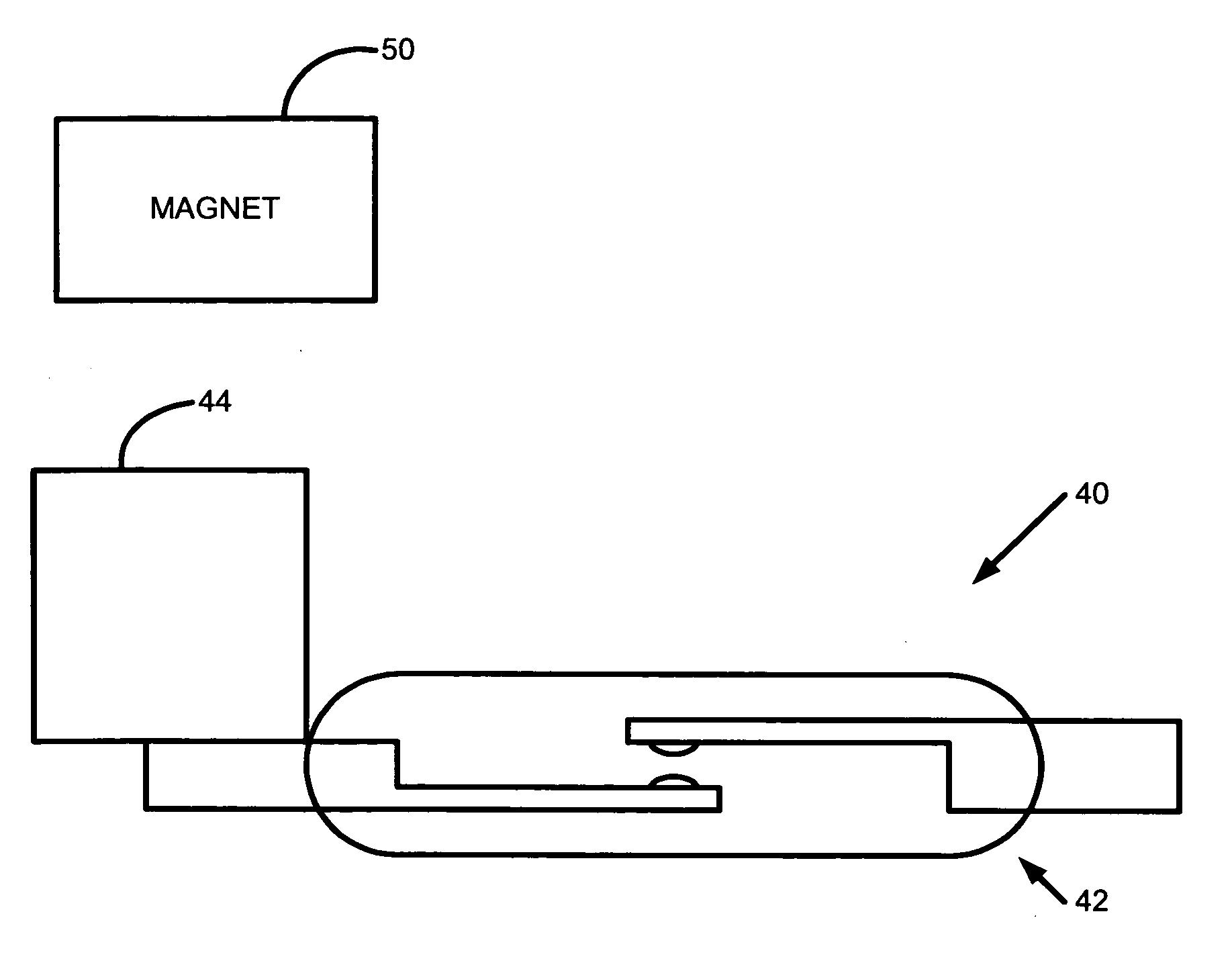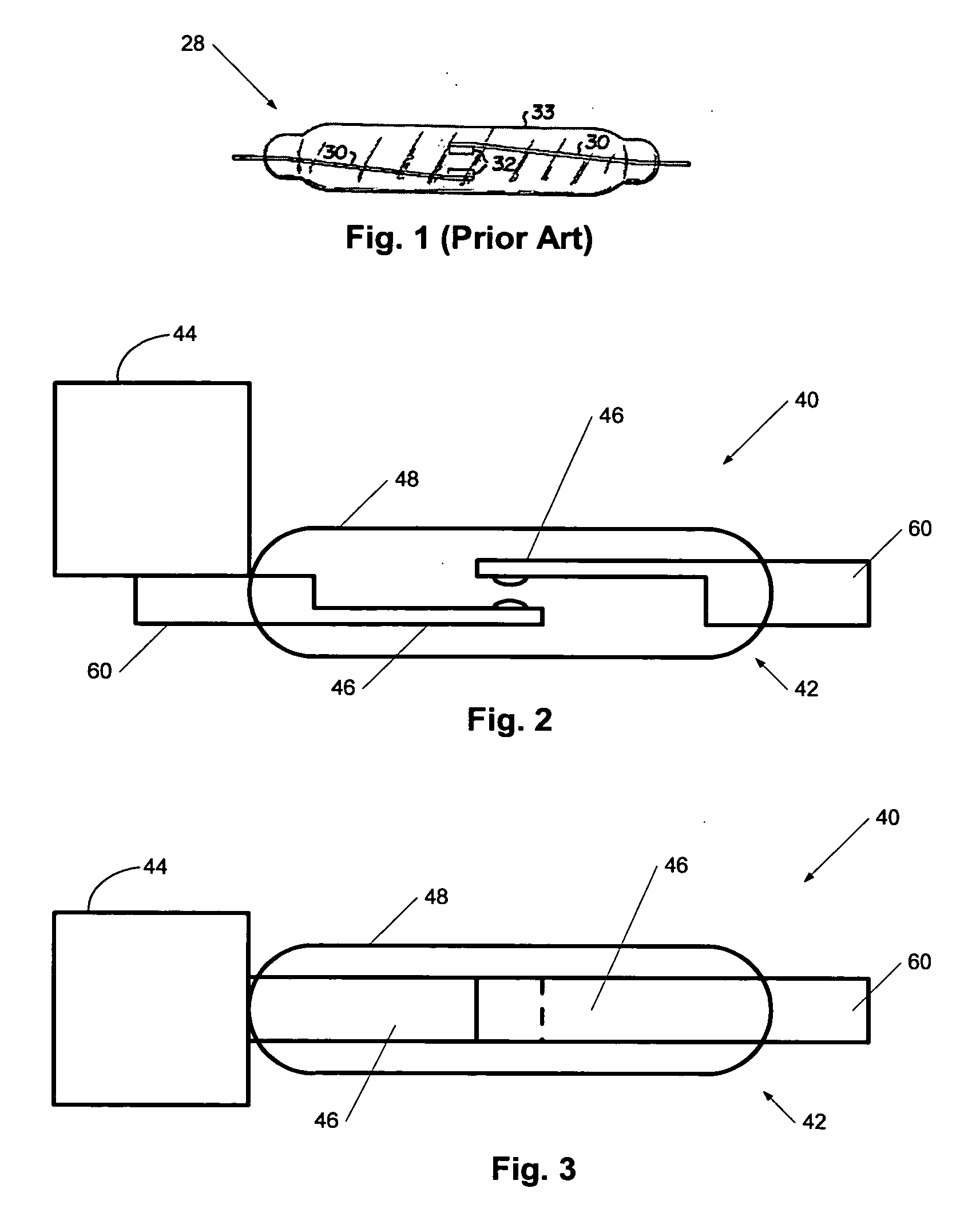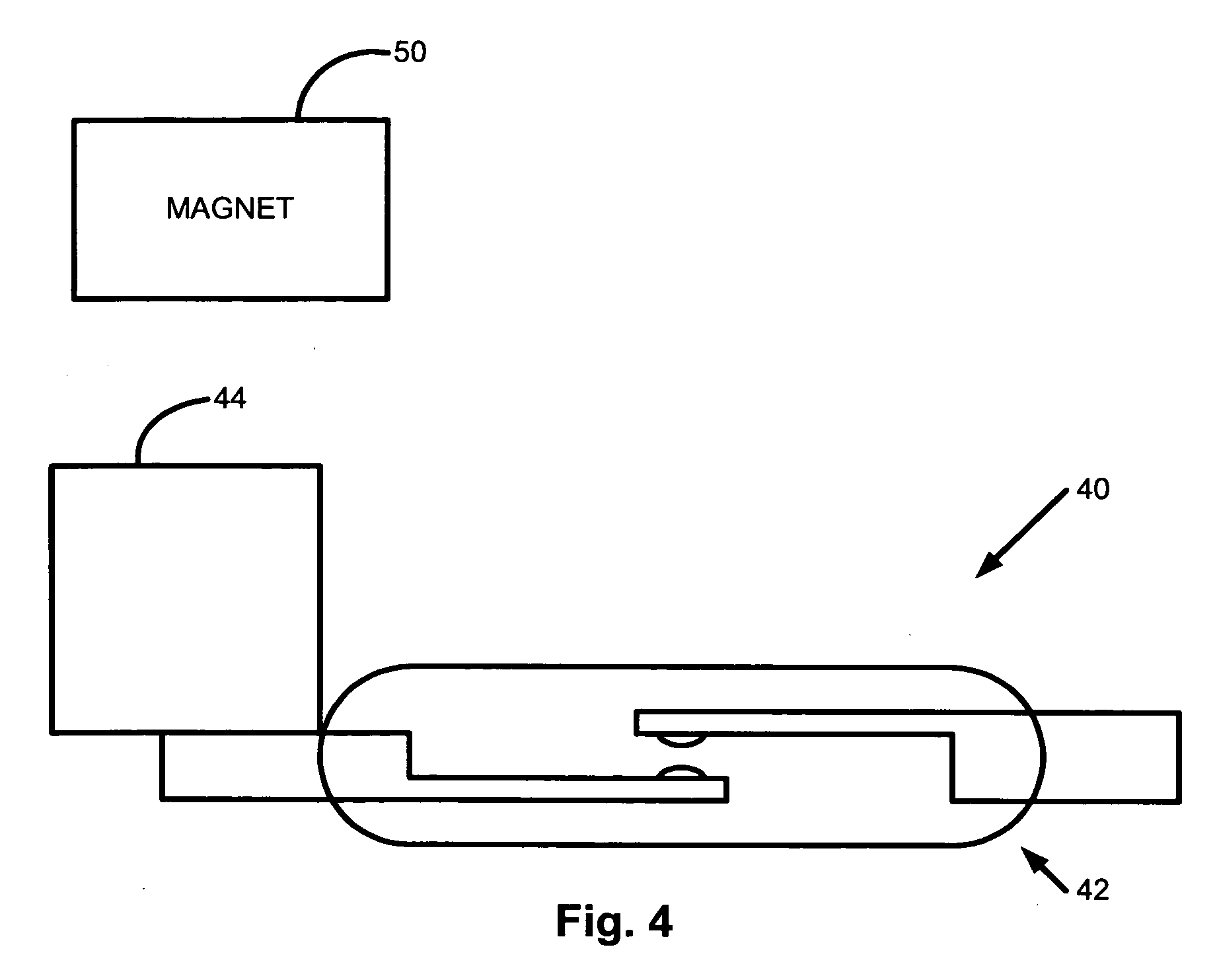Passive magnetic latch
a magnetic latch and passive technology, applied in the field of magnetic latches, can solve the problems of insufficient beam closure without an external field, and the practicality of magnetic latches in many applications
- Summary
- Abstract
- Description
- Claims
- Application Information
AI Technical Summary
Benefits of technology
Problems solved by technology
Method used
Image
Examples
Embodiment Construction
[0014]FIG. 2 is a side-view and FIG. 3 is a top-view of a passive magnetic latching device (or latch) 40 according to various embodiments of the present invention. As shown in these figures, the latching device 40 may include a magnetically-actuated switch 42 and a biasing magnet 44. The magnetically-actuated switch 42 may include components which, when polarized, cause the switch 42 to transition from a first state (such as open) to a second state (such as closed). According to various embodiments, the magnetically-actuated switch 42 may be, for example, a reed switch. The reed switch, as shown in FIGS. 2 and 3, may include a number of beams 46 made of a soft magnetic material, such as nickel, nickel-iron or nickel iron molybdenum based alloys, soft ferrites such as nickel-zinc or manganese-zinc ferrites, or combinations of these materials. The beams 46 may be configured such that there is a small gap between the contacts of the beams 46 in the absence of a polarizing magnetic fiel...
PUM
 Login to View More
Login to View More Abstract
Description
Claims
Application Information
 Login to View More
Login to View More - R&D
- Intellectual Property
- Life Sciences
- Materials
- Tech Scout
- Unparalleled Data Quality
- Higher Quality Content
- 60% Fewer Hallucinations
Browse by: Latest US Patents, China's latest patents, Technical Efficacy Thesaurus, Application Domain, Technology Topic, Popular Technical Reports.
© 2025 PatSnap. All rights reserved.Legal|Privacy policy|Modern Slavery Act Transparency Statement|Sitemap|About US| Contact US: help@patsnap.com



